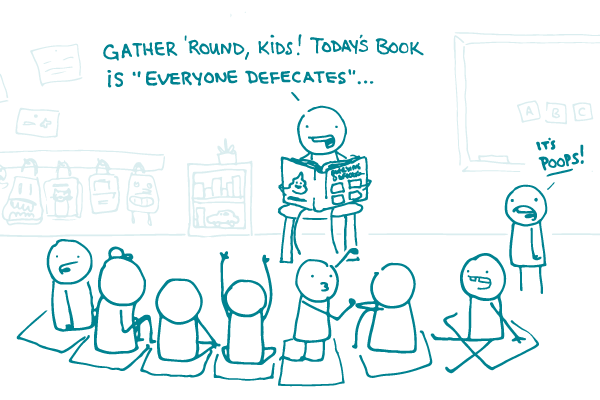
Here at We ❤︎ Health Literacy Headquarters, our goal is clear communication. Whenever we use a medical term or other jargon in consumer materials, we offer a plain language definition using everyday words. Most of the time, this is a fun and interesting challenge.
But then there are the times we need to define things that people don’t like to talk about — like bodily functions (even that term is problematic!). When it comes to our bodies and what comes out of them, we’re faced with 3 categories of terms:
- Medical/clinical (like defecate, urinate, and vomit)
- Words for kids (think poop, pee, or puke)
- 4-letter words for grown-ups that we won’t print here
What’s a plain language health writer to do? Using only medical terms sounds impersonal and detached — and your audience might not know what you’re talking about. Using the words for kids may give the impression that you’re talking down to your audience. And using the 4-letter words… well, we like having clients, so we don’t see that as an option.
The answer is to keep it simple. Usually this means providing the medical term and then using familiar words from childhood to define it. For example:
- Diarrhea (watery poop)
- Vomiting (throwing up)
Is it ideal? No, but it gets your point across! After all, it’s better to be understood than to be demure.
The bottom line (no pun intended): Always give a plain language definition for medical terms, even if it means using slang or words from childhood.
Browse recent posts